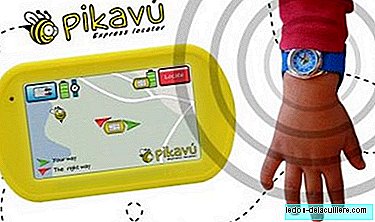
Pneumonia is the leading individual cause of infant mortality worldwide. It is estimated that it kills about 1.4 million children under the age of five every year, which accounts for 18% of all deaths of children under the age of five worldwide.
It is a type of acute respiratory infection that affects the lungs. These are made up of small sacs, called alveoli, which - in healthy people - fill with breathing air. The alveoli of the pneumonia sufferers are filled with pus and fluid, which makes breathing painful and limits the absorption of oxygen.
This disease affects children - and their families - from all over the world, but Its prevalence is higher in sub-Saharan Africa and South Asia. They could be protected by simple interventions and treated with low cost medication and care and simple technology. I would like to talk a little about the risk factors in the occurrence of pneumonia episodes. First we must know Immunosuppressed children have an increased risk of pneumonia. The child's immune system can be weakened by malnutrition or malnutrition, especially in infants not fed exclusively with breast milk.
Previous diseases and environmental factors
The previous presence of diseases such as measles or asymptomatic HIV infections also increases the risk of a child getting pneumonia. Y The following environmental factors also increase children's susceptibility to pneumonia:
The indoor air pollution caused by the use of biomass (firewood or excrement) as fuel for cooking or heating the home
Live in crowded homes
Tobacco use by parents.
Most healthy children can fight the infection through their natural defenses
How is pneumonia transmitted?
Pneumonia can spread in various ways. Viruses and bacteria commonly present in children's nose or throat, can infect the lungs when inhaled. They can also spread by air, in droplets produced in coughs or sneezes.
Further, pneumonia can spread through the blood, especially in childbirth and in the immediate aftermath. More research is needed on the various pathogens that cause pneumonia and their modes of transmission, as this information is essential for the treatment and prevention of the disease.
This disease is caused by various infectious agents: viruses, bacteria and fungi.
Prevent to reduce infant mortality
There are investigations that have determined that prevention and proper treatment of pneumonia can prevent one million deaths of children a year. Only through proper treatment can 600,000 deaths a year be avoided.
The prevention of childhood pneumonia is a fundamental component of any strategy to reduce infant mortality. Immunization against Hib, pneumococci, measles and whooping cough is the most effective way to prevent pneumonia.
Proper nutrition is key to improving the child's natural defenses, starting with exclusive breastfeeding during the first six months of life; In addition to effectively preventing pneumonia, it reduces the duration of the disease.
The number of children who get pneumonia can also be reduced by correcting environmental factors such as indoor air pollution and promoting proper hygiene in crowded homes.
Y once the disease is contracted, it can be treated with antibiotics, which are usually prescribed in health centers or hospitals, although the vast majority of cases of childhood pneumonia can be treated effectively at home. Hospitalization is recommended for infants of two months or less, as well as very serious cases.
I leave you with the measures proposed by WHO and UNICEF, which they recommend through Global Plan of Action for the Prevention and Control of Pneumoniato. It is intended to accelerate the control of this disease through:
The child protection promoting exclusive breastfeeding, hand washing and reducing indoor polluted air.
Vaccination Prevention
Treatment, ensuring that all sick children have proper health care, and receive the antibiotics and oxygen needed to breathe.












